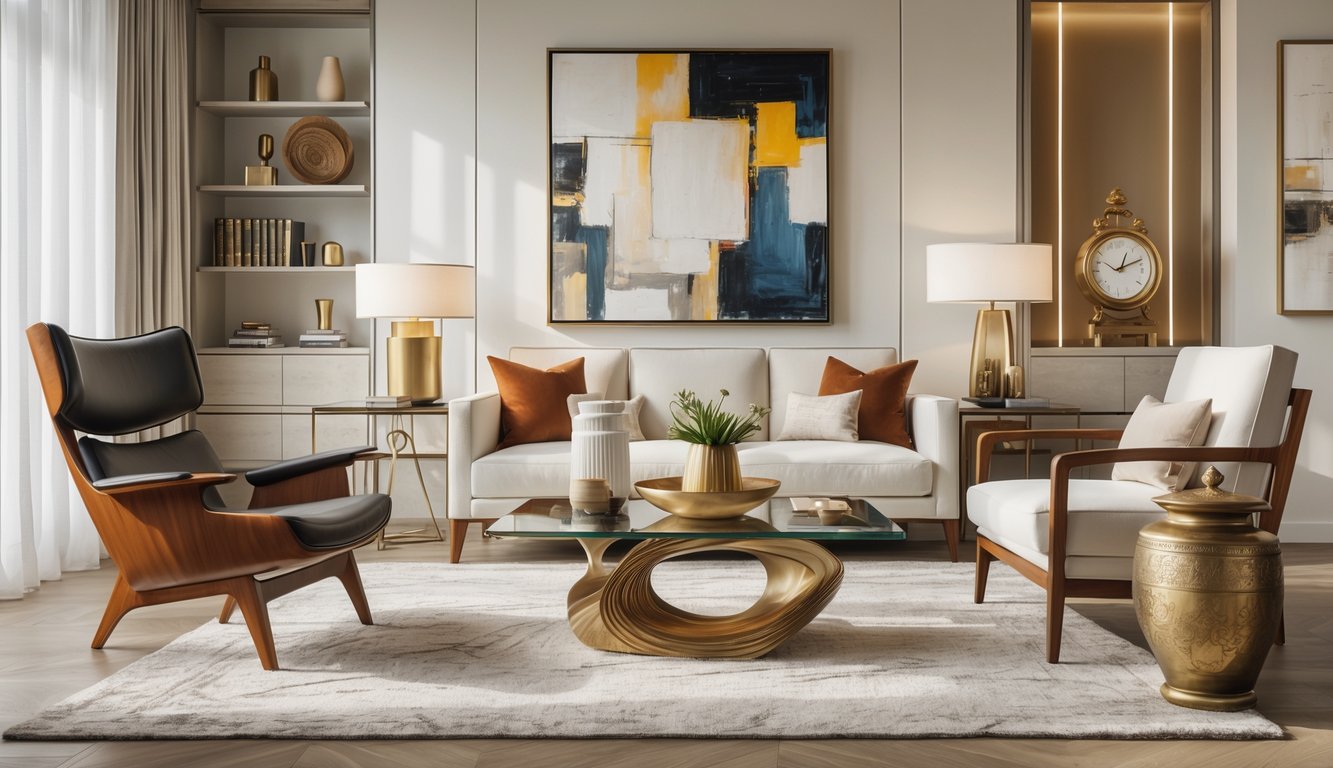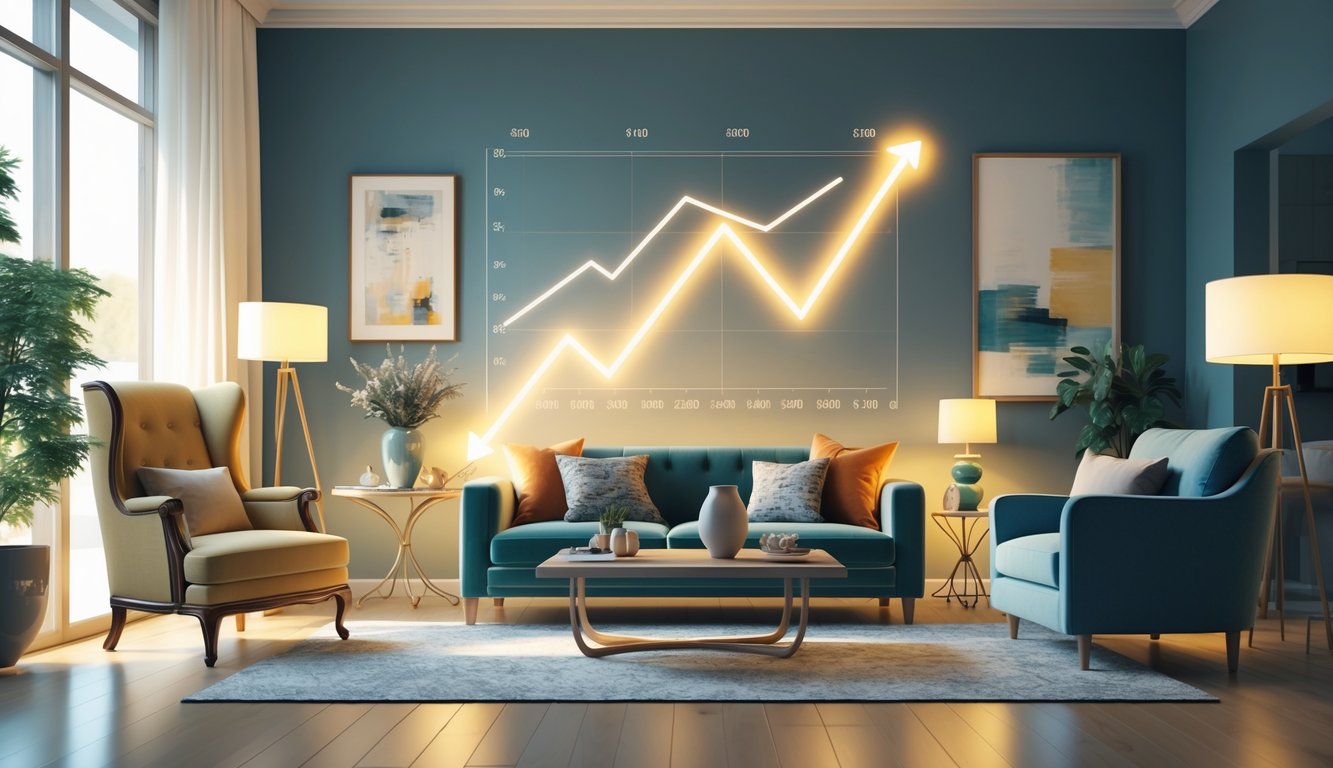
Look, I’ve got to say it: people really believe every “it” vase or whatever throw pillow is going to be some big payoff down the line? Wild. My grandma’s 1960s marble side table? Still here, still heavy, still worth more than any of the six sofas I’ve dragged to the curb. (HomeDude says the same, so, not just me.) Here’s what nobody with a resale spreadsheet ever admits: only a few decor things—like real marble tables, actual mid-century lamps, or honest-to-goodness antiques—stick around with any value once the TikTok dust settles. Yesterday my friend asked if her Target bookshelf would “appreciate.” Nearly choked on my coffee.
No, your thrift store “score” probably isn’t the next Eames, sorry. I’ve pestered enough appraisers to know: only limited-run designer collabs or things made from real-deal stuff (solid brass, hand-blown Murano glass, not “brassy finish” or “Venetian-inspired”) have a shot at holding value. But yeah, don’t get suckered by anything “statement” with zero backstory—no matter how many influencers spam you. I’m still haunted by the lucite coffee table I bought on a whim. Maybe the only real lesson here is: avoid regret, if you can.
What Defines an Investment Decor Piece?

So what actually counts as “investment” decor? I’ve tripped over enough “timeless” stuff to know it’s not just about price, or whatever some magazine editor is drooling over. “Lasting appeal” supposedly means “ignore trends,” but it’s way messier than that. If it looks good, is built from something real, and you can actually use it—like, sit in it without fearing collapse?—then maybe, just maybe, it’ll outlive your taste. Or your niece’s sticky hands.
Timeless Design and Classic Appeal
Designers love calling everything “timeless.” Sure. But my grandma’s velvet fainting couch? It went straight to the curb. Stuff that actually survives generational taste usually has a recognizable shape—Barcelona chairs, Persian rugs, Egg chairs, you get it. Sotheby’s put out a 2022 report: pieces from famous eras (midcentury, Deco, etc.) hold up to 80% of their original value, as long as you don’t pick some wild color nobody wants in five years.
I’ve watched people fall for trends (terrazzo, anyone?), but the pieces that stick? Neutral colors, proportional frames, finishes that don’t scream for attention. Restoration guy I know—super crabby, but he’s seen it all—once told me, “If it looks like it could’ve belonged to any decade, it’ll last longer than your patience.” Not sure I like that, but he’s not wrong.
Quality Materials and Superior Craftsmanship
Lost a “real” leather sofa to dog-walker puddles (don’t ask). So now I only trust stuff that can survive a repair attempt by someone who owns actual tools. Investment pieces are almost always hardwood, wool, stone, or metal. Glass-top tables? Meh. I checked auction data last year—walnut’s king (retains up to 70% value), engineered oak? Not so much (sometimes 30%, if you’re lucky). Dovetail joints, mortise and tenon, solid brass hardware—those are the magic words. Christie’s buyer at a panel said, “If you don’t know what those mean, just Google it.” I keep a cheat sheet in my kitchen. Never trust staples.
Functionality Beyond Aesthetics
If you can’t fill the vase or sit in the chair, what’s the point? I test everything: if I can’t set a mug on it or hide a blanket inside, it’s just Instagram bait. Flexibility’s huge—modular shelving, expandable tables, lighting you can actually rewire. Architectural Digest cited a 2023 study: multipurpose pieces (secretary desks, convertible sofas) hold about 15% more resale value. Insider tip: “Clients pay for versatility. The more a piece adapts, the longer it survives.” I use a flea market barrister bookcase with cracked glass for blanket storage. Function trumps beauty, every single time. Unless you’re curating a museum, skip the single-use props.
Understanding Value Retention in Home Decor

People think a fancy table means instant investment. Nope. It’s all about details—joinery, finish, and for some reason, the weird popularity of mid-century bar carts (who actually uses those?).
Impact of Durability and Construction
Veneer peeling? That’s how you end up with junk, no matter how trendy it looks online. Sometimes I spot solid oak or dovetail joints under the dust—those are the sleepers. Sotheby’s specialist said, “90% of auction value comes from craftsmanship you can’t see.” Brass welds, smooth drawers—those last.
Laminated MDF, wobbly fasteners? Pass. Flimsy imports, even with influencer hype, just buckle. Limited-run designer pieces with real materials—Eames chairs, Børge Mogensen cabinets—always headline resale. I always run my hand along the bottom and listen for squeaks. If it feels solid, it probably is.
Importance of Condition and Care
Cracks, water rings, bonus dents? “Patina” doesn’t save you unless it’s a true antique. I’ve seen $5,000 drop off a Danish sideboard just because someone tried to refinish it themselves. Modernism Magazine (2021) said there’s a 27% average loss for botched furniture repairs at auction. In vintage decor, condition is everything.
Appraisers always mention: original hardware, matched finishes, and clear provenance boost value. I vacuum upholstery seams like a maniac (friends mock me), but I’ve seen how grime scares off buyers. You can’t fake “clean,” and now people bring UV flashlights to estate sales. Not kidding.
Recognizing Demand and Resale Potential
Mid-century bar carts are weirdly hot right now. No idea why. Most trends are unpredictable (my aunt’s convinced Victorian marble-tops are coming back), but limited editions and designer collabs—like early IKEA x HAY—just keep climbing. The RealReal’s 2024 report says some iconic decor items jumped 18% YoY in resale value, which is nuts.
Nostalgia-driven fads (postmodern lamps, Memphis shelves) blow up after a celebrity post, but unless demand’s deep—like for Knoll or Herman Miller—most things just fizzle. I always check recent sales and turnover on Chairish before getting attached. Just because you see it everywhere doesn’t mean anyone’s paying real money for it.